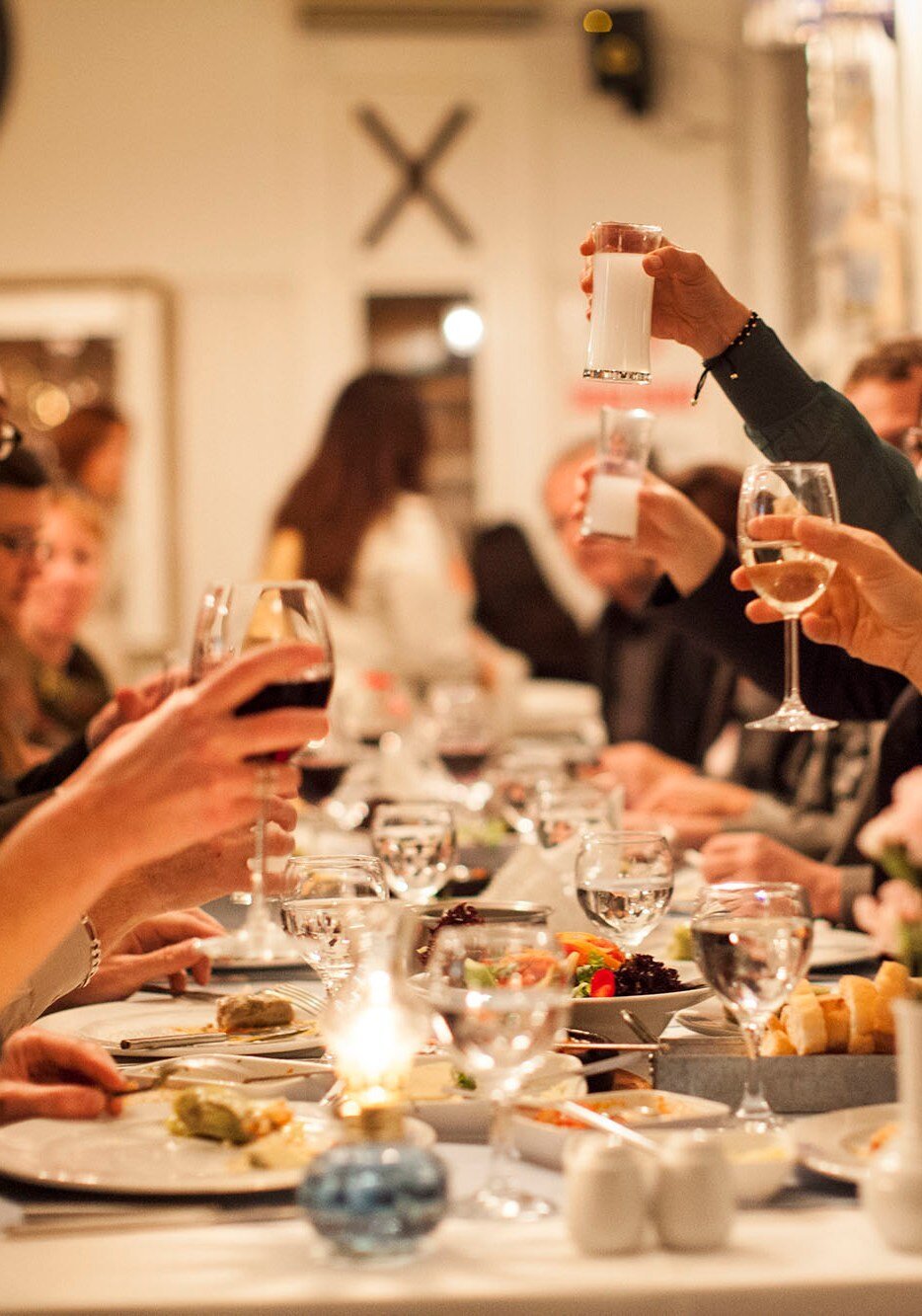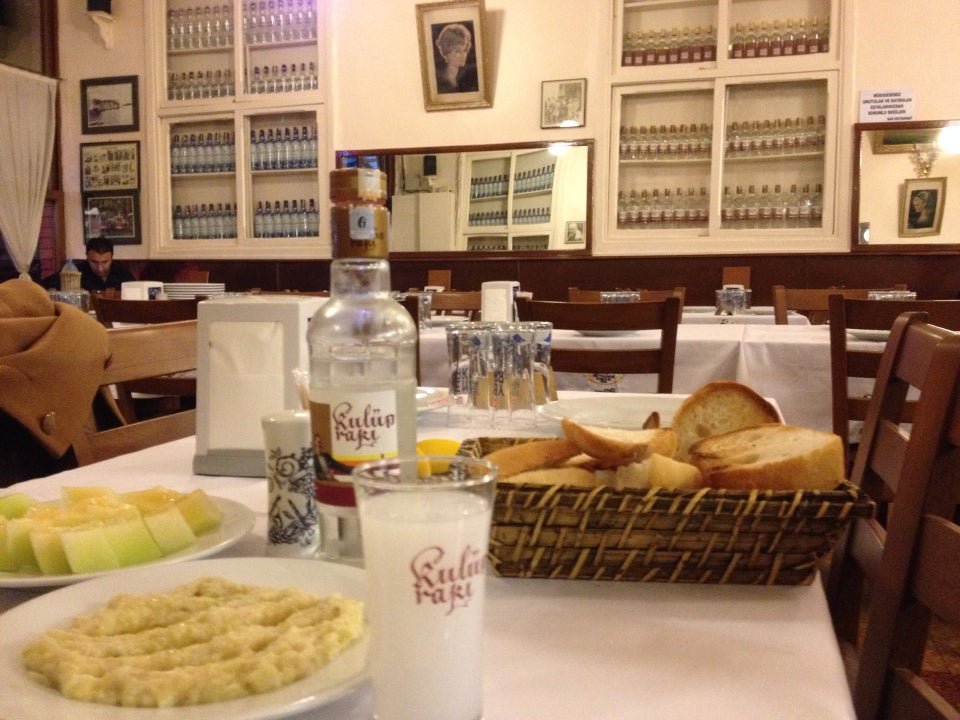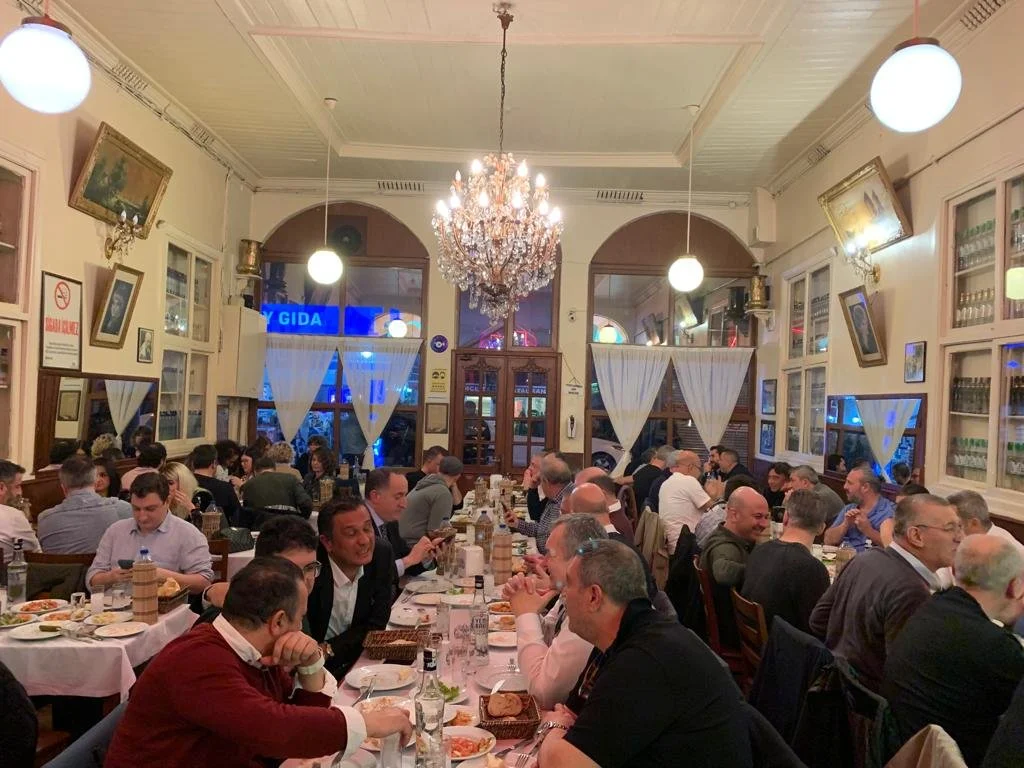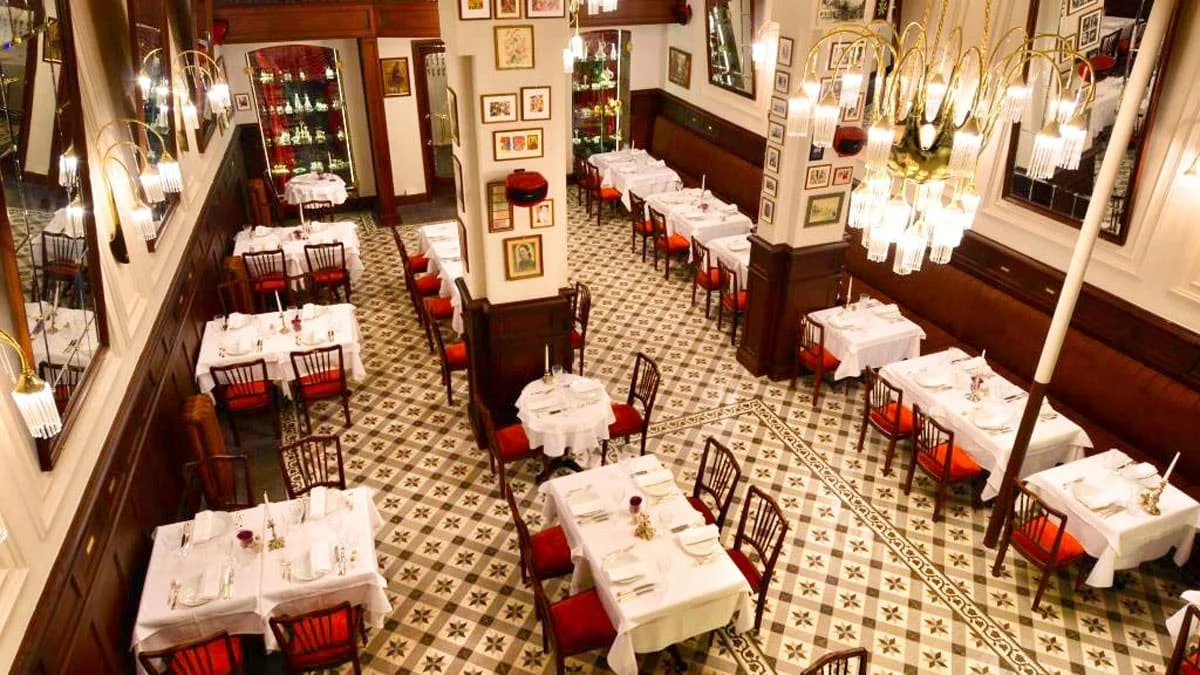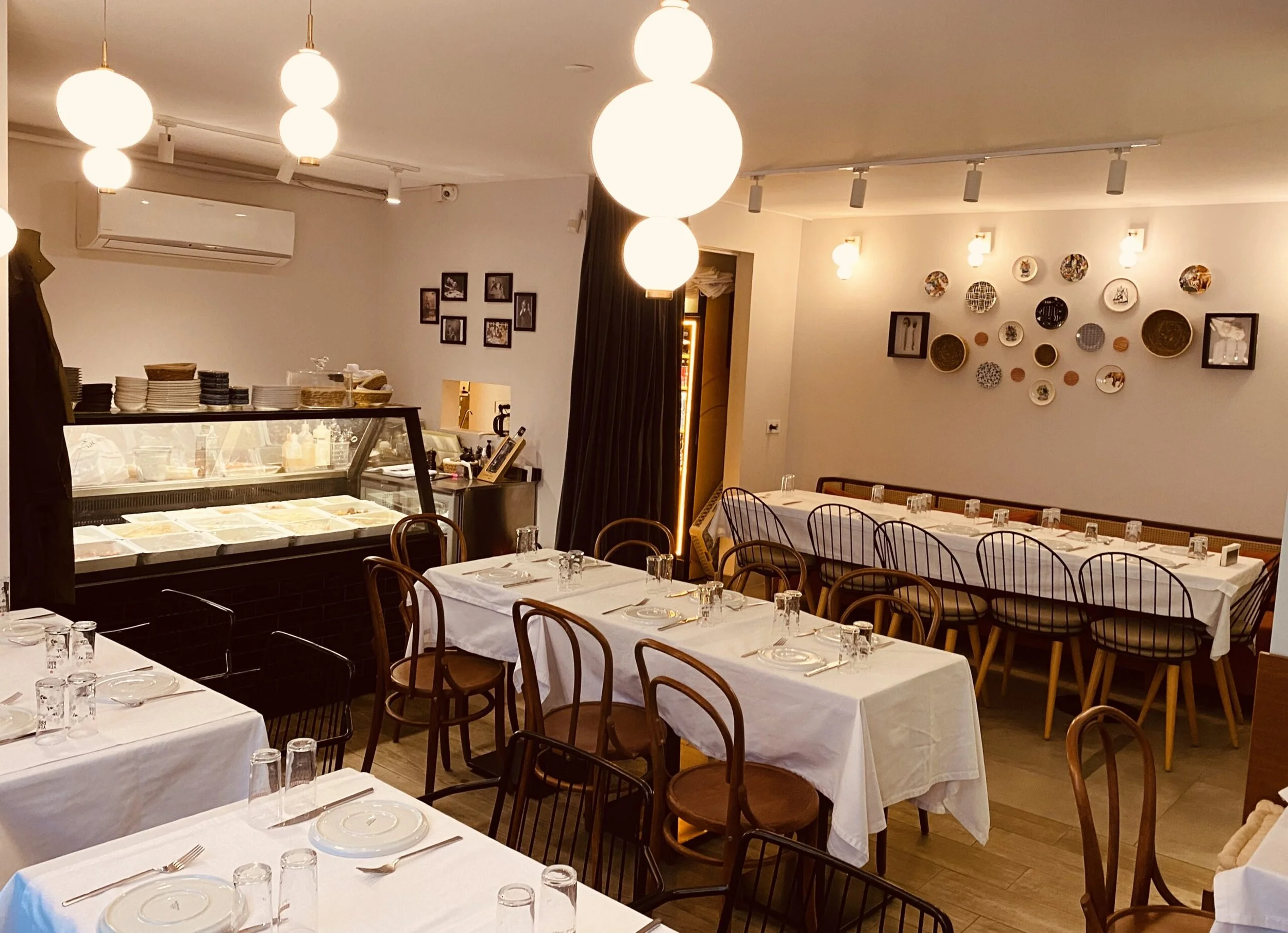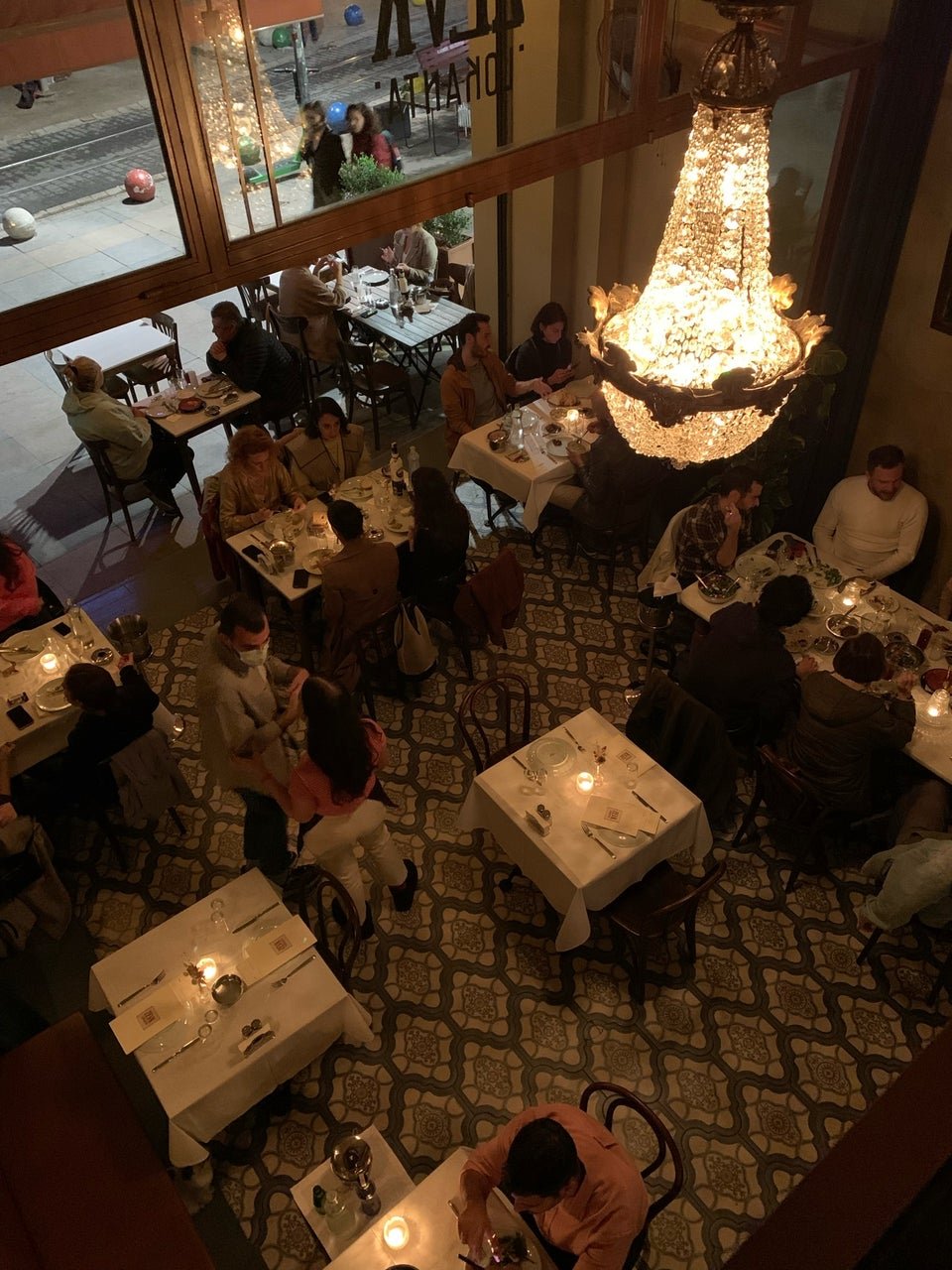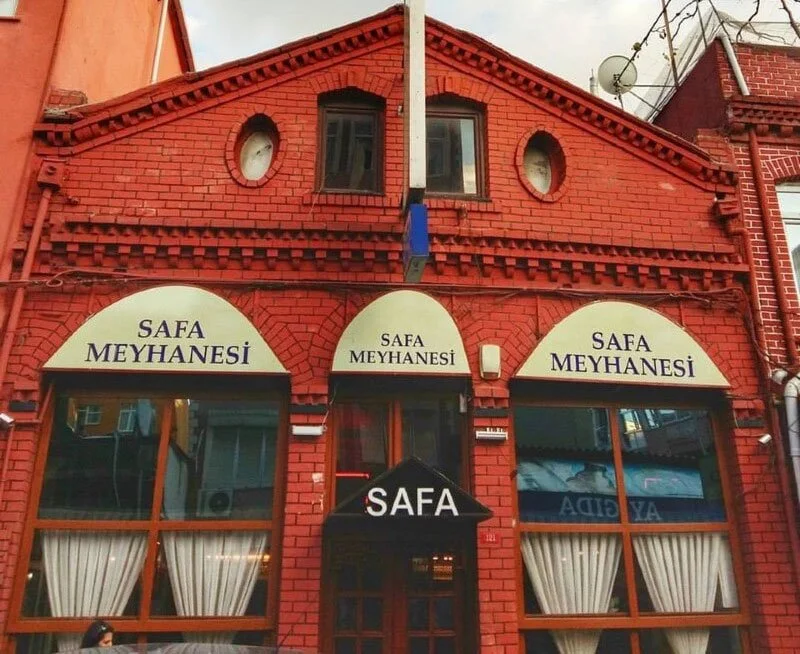Revealing the Soul of Meyhane Interiors
In the tapestry of cultural practices, societies have long designated specific spaces for the consumption of alcoholic beverages. Pubs, Biergartens, or taverns—all these venues witness the universal act of indulging in drinks, whether alone or in the company of friends, family, or even strangers who become friends during shared drinks. However, while drinking may be universal, the experience it engenders is distinctly unique. It's not solely about geographical preferences for drinks or the arrangement of social dynamics; it's about the individual character of each drink, the space and the rituals that envelop it. The journey within our experience finds its essence in "rakı,".
At the heart of this narrative is the "meyhane," a term forged from the fusion of "mey", meaning drink and "hane", meaning home. Amidst the melting pot of cultures, the meyhane found its identity as a vibrant locus for intimate gatherings.
A scene from the documentary - İstanbul Meyhaneleri Vuslatın Başka Alem - Source: gastromondiale.com
Meyhanes, with their intricate rituals and intimate settings, hold profound significance in Istanbul's rich culture. Beyond the bustling metropolis and historical landmarks, it is within the meyhane's cosy confines that the city's true soul reveals itself. These establishments, steeped in history and tradition, serve as living archives of Istanbul's collective memory.
What is a meyhane, really?
Meyhane reflects Istanbul's past, present, and future, showcasing the city's adaptability and resilience. Istanbulites began embracing meyhanes during Bayezid II's reign, marking the birth of these cultural hubs. Despite evolving over time, the essence of meyhane—from its materials to its social fabric—remains unchanged. Originally spaces solely for drinking, meyhanes have evolved into hubs of companionship and storytelling. Since the 18th century, they have been integral to Istanbul's urban culture, diversifying entertainment beyond the palace precincts. This shift integrated social life into everyday routines, leading to the proliferation of leisure venues like meyhanes across the city.
Everyone curates their own unique meyhane experience.
Safa Meyhanesi
The rakı table transforms according to individual preferences; perhaps covered with a cloth, fashioned from newspaper sheets, or crafted from sturdy wood. Each person holds their glass with a distinct touch, yet collectively, they contribute to the ambience of their regular meyhane. Within every meyhane, a distinct soul emerges— a delicate harmony of mezes, decor, regulars, staff, and music, rabarba, fostering the laughter and camaraderie that permeate these cherished establishments. Much like Peter Clark’s study on English Alehouses, meyhanes play a vital role in their respective geographies, offering a sense of belonging to individuals from all walks of life.
Safa Meyhanesi
So what is a meyhane really? What makes a place where people drink rakı a meyhane? What creates the meyhanes and how can the meyhane be decorated? What are the things we interact with along the night in a meyhane?
To decorate a meyhane is to paint a canvas of memories, emotions, and timeless traditions—a tapestry that weaves together the threads of history, culture, and community. From the moment regulars step through the door, every element of the interior serves as a backdrop to their experiences, shaping the atmosphere and setting the stage for the stories that unfold. In the world of meyhane culture, it's not just the beverage but the synergy of seemingly minor elements—the whispers of shared stories, the harmonies of songs, the unhurried exchanges—that orchestrates an ambience where time is elongated, and connections are deepened. It's this very melange of subtleties that draws people beyond the mere act of drinking; it is the atmosphere—the very soul of meyhane—that beckons them into its experience.
How can we decorate our meyhane?
Decoration in a meyhane extends far beyond mere aesthetics. It engages the senses, evoking emotions and memories with every sight, sound, and scent. The warm hues of ochre and terracotta create an ambience of warmth, while the soft glow of light casts a spell over the space.
Rejans Rus Lokantası
The walls of a meyhane are not just walls; they are storytellers, bearing witness to the laughter, the tears, and the shared moments of countless people. Photographs of them past and present on the walls, their smiling faces a testament to the enduring spirit of gathering that defines the meyhane experience. These images serve as anchors to the past, opening the way for many toasts and conversations.
Just like the walls, from the minute a table is situated in a meyhane, it becomes more than a piece of furniture. It becomes a space for gathering, sharing, and conversing. The table becomes a witness to memories while being a stage for mezes.
In decorating a meyhane, every element serves a purpose, from the choice of artwork to the arrangement of tables and chairs. Each detail is carefully considered to enhance the dining experience and foster a sense of community and belonging. As people gather around the rakı table, they become part of a larger narrative — a story that stretches back through the annals of time and continues to unfold with each passing day.
Pop-up Meyhane in Chelsea, London by Istanbul Elsewhere, photo by Ferhat Elik
Decorating Meyhanes as Gathering Spaces
At the core of every meyhane lies a familiar rhythm—a rhythm that resonates with all who enter. While each may boast its own unique décor, the essence remains the same. A meyhane is more than just a place to dine and drink. From the pictures on the walls to the scent of anason in the air, every detail has been carefully crafted to enrich your experience and create lasting memories. Every table choice, chair preference, flooring, lighting and more is within the experience.
Tomris Hanım Teşvikiye
The conversation around the table is deemed sacred in the meyhane. It's where rakı glasses converge, memories resurface, and conversations brim with nostalgia—a space that transforms the meyhane into a sanctuary of communal bonding. Sitting around the rakı table, conversations flow, memories are shared, and everyone greets each other with their own rituals, turning the meyhane into a gathering place. The invitation to "come sit" signifies inclusion in the experience, while "let's sit and talk" fosters a prolonged sense of sharing. And as conversations deepen, the invitation to "let's have a drink" emerges. The relationship between sitting and conversing is intimate and profound. As people sit, their shared experiences deepen emotionally and spatially, forging bonds over food and drink. Gathering around to eat, drink, or center around something is a ritualized practice in the meyhane. Placing rakı glasses, displaying mezes, and setting the stage for a shared experience is part of this ritual. Memories and conversations are greeted with rituals, as everyone acknowledges each other around the table.
Zevk Lokanta
What kind of purpose does your meyhane have? Do you intend to expand your meyhane in the future? What are the vital things while operating a meyhane? Who are your regulars and customers? These questions serve as a formation of the interior of meyhanes as they refer to the materials, details, lighting, and all. The minute you see the exterior of the meyhane, the experience begins. So the details matter from the name, sign, colours, windows to the floorings and door, all the way to service areas.
There are two things that form a meyhane, the service areas and customer areas. The circulation inside the meyhane is important as you wouldn’t want people to run around to serve or to find a place to sit. The positioning of the tables and chairs therefore offers you a navigation through the interior. This arrangement is important to make the meyhane as peaceful as possible and to not interrupt the conversations. Cause meyhanes focus is the conversation. Mezes, rakı, and food are all situated around conversation. As in the circulation for walking and service, the conversations also have a circulation of their own, so the tables’ positions and distance to one another are important, as well as the acoustics of the space.
Safa Meyhanesi
The exterior of meyhanes is a way to open the experience to the interior. From the façade design to signs, meyhanes should strike attention to make it seem intimate and inviting. The façade of the meyhanes offers a clue to the inside, usually by glass panels to form a semi-opaque observation, sometimes accommodated with curtains.
From Materials to the Soul of the Space
“Güzel bir dünyada yaşamak istiyorsanız, siz de öyle bir meyhane bulunuz.”
“If you want to live in a beautiful world, find a meyhane like that.”
-Orhan Veli
As these things are important, the most important thing for a meyhane is to have a character, to have a design language where everything is correlated and in relation to one another. It should speak to the structure of the space, respect the identity of the space if it has a distinct character, and be in sync with its surroundings.
The materials, modern or traditional, should all be used in harmony as the peace of the place through decoration sets the scene for the customers. The sunlight, lights used in the night, colours, chairs, and tables are all things meyhane should foster carefully to create something beyond a place to drink.
Zevk Lokanta
The wooden tables create a more intimate experience, marble tables have a weight both physically and emotionally, the lighting that changes through the day depending on which time of the day creates an ambience, and colours with lighting changes the mood of the space. Every material that is used in meyhanes is curated to create an “intimate” environment as it is the key to the space. Even though tables are carefully positioned, chairs can touch each other, you can see what other tables are eating, you can ask for a spare chair from the table next to you, therefore this intimacy is positioned everywhere. While intimacy is everywhere, as mentioned, the conversations have invisible borders to create a more intimate setting around the tables. This is usually made by using sound-absorbing materials in the floorings to lower the noise coming from everywhere. The walls, covered with photos and memories form a history of the place as it is also used as again a sound absorption technique.
Join us as we think about the essence of meyhane interiors, from chairs to tables, walls to flooring, and even the exterior. Together, we will craft the soul of the meyhane through design. Much like what Orhan Veli said, we are crafting ourselves a meyhane to live in a beautiful world.
Further Readings:
Işıl Çokuğraş. Bekar Odaları ve Meyhaneler: Osmanlı Istanbul’unda Marjinalite ve Mekan (1789-1839). İstanbul: İstanbul Araştırmaları Enstitüsü, 2016.
Murat Can Kabagöz. Eğlenirken Modernleşmek : Meyhaneden Baloza, Imparatorluk’tan Cumhuriyet’e Istanbul. Ankara: Heretik Yayınları, 2016.
Meyhane İhtisas Kitabı. İstanbul: Anason İşleri Yayınları, 2022.

